Story by Julia Morrison | Photos by Matt Odom
This spring, savor the spirit of Sakura and more renowned eats with a road trip inspired by the new Atlanta Michelin Guide.
Nestled in the lobby of a midtown Atlanta high-rise, behind a single, unimposing white door and a sign in Japanese kanji, is one of the best traditional sushiyas in the world, Hayakawa.
Yes — sushi. ATLiens have long known about the elegant eatery, helmed for years by its namesake chef Atsushi Hayakawa – who goes by Art with his English-speaking audience. Atlanta Magazine raved, “Just try to get into Sushi Hayakawa,” back in 2016. But for the wider world, great sushi might not come to mind when you think of Atlanta.
The food of the South is often stereotyped, and occasionally mocked, as only down-to-earth and inexpensive comforts, like those that can be found at our beloved Waffle Houses. William Pate, president and CEO of Atlanta’s tourism bureau, noted that, “Atlanta’s culinary scene is rich in diversity and constantly evolving but has long been one of the most under-appreciated assets in our city,” while an opinion article in the Atlanta Journal-Constitution explained, “We’ve always felt that this is a terrific food city that frequently is overlooked by outsiders.”
But in addition to the fish and grits or red beans and rice that have kindled many an OutKast lyric, “There is much depth here that should not go overlooked,” says Gwendal Poullennec, International Director of the Michelin Guide, who noted the city’s diversity, saying, “Atlanta is a culinary powerhouse.”
In 2023, the renowned guide, which sets the bar for international culinary excellence, rolled into Atlanta and granted its first stars — in part because of Hayakawa’s precisely placed sashimi. It’s the story of a new Georgia, one that is marked by a growing immigrant and Asian American and Pacific Islander population, and whose cultural excellence has gotten buzz since the film industry settled in “Y’allywood.”
There are 45 restaurants featured, spanning the globe from Malaysian to Middle Eastern eats. Each earns different levels of distinction, including a special award emphasizing environmental sustainability, with five earning a coveted Michelin star. Alongside Hayakawa, the other newly starred establishments are:
• A new, eclectic omakase fusion experience (Mujō)
• An iconic, contemporary farm-to-table favorite (Bacchanalia)
• A technique-driven, relaxing tasting menu (Lazy Betty)
• A posh hotel wonderland with revolving featured chefs (Atlas)
Those who earned a star range in price from approximately $100-350 per person before drinks, taxes, and tips, and carry a prix fixe menu, as is typical of many fine dining establishments.
However, 10 Atlanta restaurants earned the Bib Gourmand title, which explicitly looks for the opportunity to have a superb multi-course meal for under $49 and run the gamut from Neapolitan pizza to Venezuelan arepas.
As travelers pour into Macon from all over the world as part of the International Cherry Blossom Festival, take some time this spring to grab your keys, head north on I-75, and sample the spirit of sakura on your plate at Hayakawa – or elsewhere, since you can travel with your taste buds and experience the best dining the world can offer in the span of a simple day trip.
From tiremen to tastemakers
Many people don’t know that the Michelin Guide has the same origins as the impish, marshmallowy mascot known as the Michelin Man. Behind both concepts are a pair of visionary French brothers, Édouard and André Michelin, who founded the eponymous company. The entrepreneurs developed many engineering innovations that drivers use every day (like easily removable tires), but they may be perhaps best known for their marketing prowess, creating demand for their own product.
When the Michelin brothers began making pneumatic tires, there were less than 3,000 cars on the road in turn-of-the-century France. They promoted driving with the Michelin Man, AKA Bibendum – which roughly means “drinking time” in French, exemplifying a carefree and entertaining spirit with cars. (They were not as cognizant of drinking and driving back then.) The vivacious, pillowy cartoon was made out of tires, which were originally white in color, who has become one of the most recognized trademarks of all time.
Another bright idea was to publish a travel guide to boost car sales, famously showing places that were worth a drive. They even created a secondary profit stream, deciding in the 1920s to charge seven francs for the guide and placing paid advertisements. Starting a century-long tradition, Michelin paid anonymous reviewers to dine in fine restaurants in utmost secrecy. This methodology has given the guide gravitas, since reviewers can’t be bought off, and staff don’t know who to impress.
Eventually, the best establishments could earn stars, and a culinary standard was born. Selectivity is the key to the guide’s reputation. Atlanta is only the fourth city in the United States to have its own guide, following New York, Chicago, and Washington, D.C., alongside state guides for Florida, California, and Colorado.
The road has no divots: authenticity drives Hayakawa
Macon visitors entering Hayakawa will find a familiar cherry blossom etched in glass in the elegant dining room, just one element meant to immerse diners into a Japanese aesthetic. Sushi as a culinary artform represents key aspects of Japanese culture — simplicity and tradition — both of which Chef Hayakawa embraces and shares with his American audience.
The devil is in the details. The fine wood furnishings evoke the naturalism of Japanese interior design. The napkins change weekly, chosen to send a message. The day MM staff came for photos in January, the napkin had a pattern of seven gods to represent luck for the new year. Visitors might be tempted to think a floor-to-ceiling wall covering of Japanese calligraphy near the host stand is merely decoration. It isn’t. It’s the handwriting of Hayakawa’s own father, captured before he passed. “The road has no divots,” it proclaims. Staff explained this proverb is meant to show optimism when undertaking an endeavor: “just imagine the road is smooth ahead.”
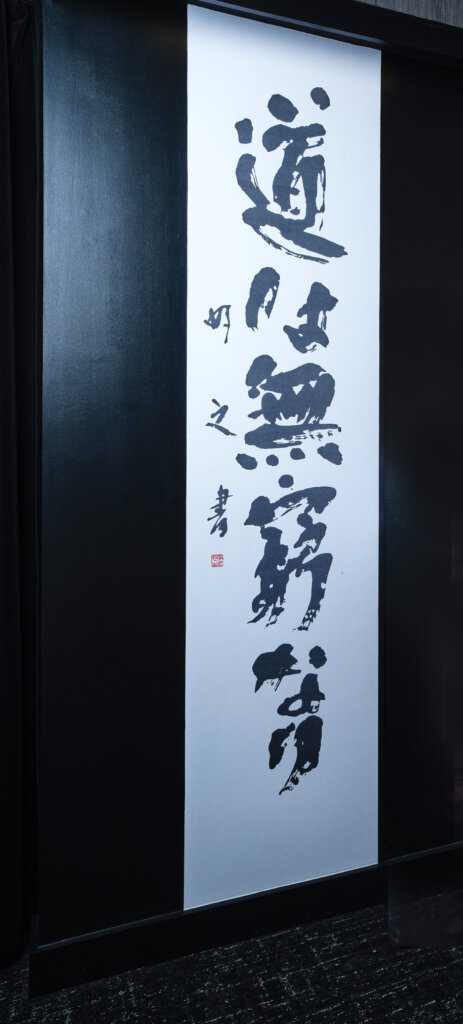
This tenacity represents Chef Hayakawa’s journey from Hokkaido, his native island. He was classically trained in Japan before moving to the United States and opening up shop 16 years ago. His restaurant was originally on an unassuming stretch of Buford Highway, a suburban road dotted by immigrant-owned businesses in Gwinnett County, the most racially diverse municipality in Georgia.
“I remember the fear and anxiety I had at that time, but looking back, I am so glad I was able to get the courage,” Hayakawa said. The restaurant quickly took off, gaining a reputation for being the most authentic sushi in town. “We try to serve food and experiences as similar as possible as that in Japan.”
This includes intimate seating along the single sushi bar and policies like no strong fragrances and no cell phones during the meal. Hayakawa is known to his patrons with the honorific Haya-san (a way of showing respect, like saying Mister – or perhaps sir or ma’am to your average Georgian). He arranges plates in front of the guests, joking and educating along the way, so patrons remain fully present in their meal.
Hayakawa only serves a 16-course omakase experience, a Japanese-style chef’s tasting menu, “which means ‘leave it up to me/up to you,’ and as such, the menu and cuisine style is completely made and curated by the chef for you,” said Hayakawa.
The food, too, is distinctive. One won’t find Americanized rolls with cream cheese – the focus is on the fish, which Hayakawa often sources all the way from Japan’s famous Toyosu market. “The freshness is different, and there is a lot of care in getting the fish here,” noted Hayakawa. “I believe that care and gratefulness is reflected in the flavor.”
Hayakawa’s signature dishes reflect his heritage: “I incorporate some of Hokkaido’s taste in every weekly menu,” he explained. This includes his Hotate (scallops), an audience favorite, and the Ikura (salmon roe).
One of his best-known “trademarks of Hokkaido,” as he calls it, is a dish most Americans (even sushi lovers) won’t have tried before – Uni, or sea urchin. Uni has a light, fluffy texture, foam-like appearance, and briny flavor.
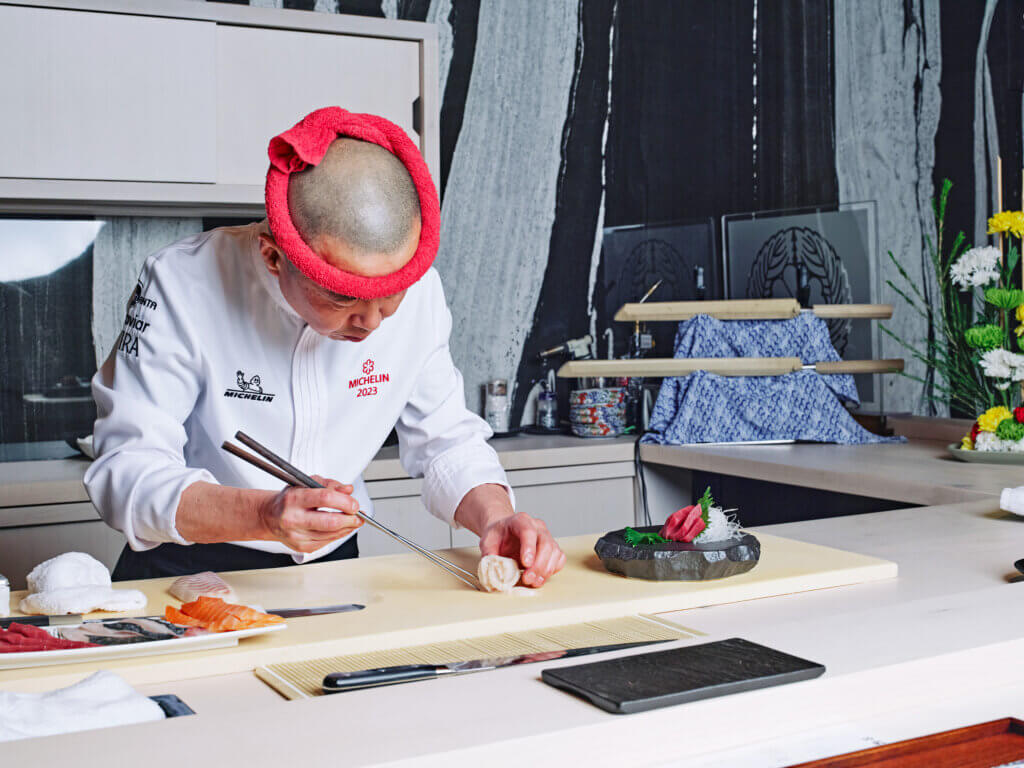
When COVID hit, Hayakawa, like many restaurants, was forced to adapt, serving bento boxes to-go and operating short-staffed. But more meaningfully, Hayakawa began bringing meals to Emory University Hospital – and didn’t stop for over a year, including serving frontline healthcare workers on holidays. He eventually earned a medal from hospital workers in mutual solidarity. “We may serve food, but we cannot save people’s lives. We wanted to support those who were working hard and struggling to help others,” he said.
With pandemic strictures lifted, in 2023 Hayakawa moved to Midtown’s Star Metals building. The upscale location and sleek design were paired with even more intentional practices. Hayakawa now serves only two seatings of eight diners per night. Throughout each change, the accolades keep coming. “By winning the star, I feel like I’ve been able to give back to all who have supported us,” noted Hayakawa.
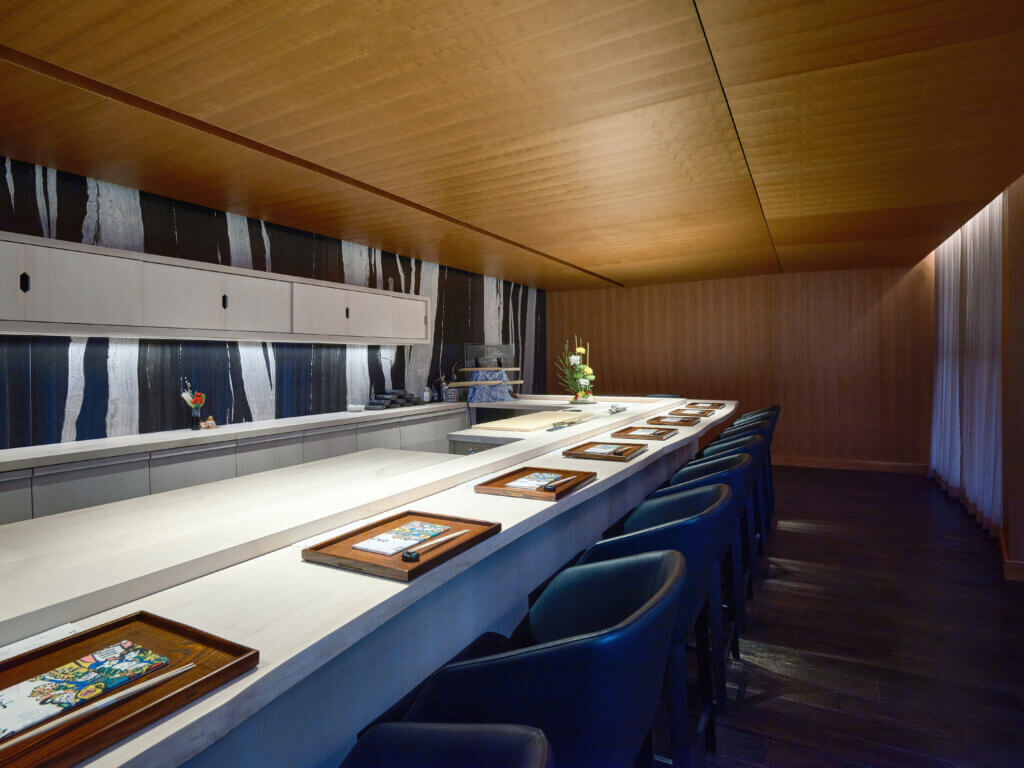
More than his awards and reviews, he says he’s most proud of his team. His translator, Monet, who describes herself as “a third culture kid” due to her Japanese-American heritage growing up in East Africa, seems emphatic about her experience: “It is so easy to take pride in the work we do here,” she said, describing how her work has made her feel at home in the United States. “It’s so fulfilling to not only share amazing food, but a core part of my heritage and the beauty of Japanese cuisine.”
Speaking lovingly of his adoptive home, Hayakawa believes, “The taste of Atlanta is soul food! I’m always inspired by Atlanta to put my soul into my food.”
More Michelin day trip recommendations
Bacchanalia
Want to experience a staple of Atlanta’s fine-dining? Bacchanalia will be a treat. It’s stood the test of time as an anchor to explore the trendy Westside neighborhood. Co-owner and award-winning chef Anne Quatrano has been a pioneer since opening in 1993 – for the city’s fine dining culture, for female chefs, and for the now-popular local food movement, sourcing from her family’s farm.
She tells me the Michelin achievement felt unbelievable, but it makes her think of “a long line of very talented people who have worked with us over the past 30 years. It’s a culmination of a lot of people and talent and years of trying to do the best we can.”
The James Beard Award winner is proud of the entire culinary community, too. “I’ve cooked in a lot of cities – San Francisco, Boston, Nantucket, New York City. This is the first city I’ve cooked in where I feel a real camaraderie. I feel like the restaurants – the chefs – have a really strong community here. I don’t feel like anybody’s going to hold back for a source or an ingredient. I want everyone in the city to be their best. That’s a mutual feeling. And that’s slightly unusual. It’s normally very competitive, but I still want them to be their best.”
Her signature flavor? She tells me that she loves acid and the punch of vinegar, but their goal at Bacchanalia is to hit all the taste profiles in the mouth simultaneously – “When everything fires at the same time and the flavors pop.”
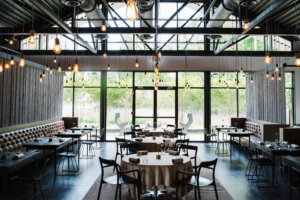


Lazy Betty
If you’re looking for newer digs, try Lazy Betty, owned by chef partners Aaron Phillips and Ron Hsu, former colleagues at the lauded Le Bernardin. Hsu is an Atlanta native who grew up working in his mother’s kitchen, Hunan Village. She was Lazy Betty’s namesake. Phillips is an innovative New York-trained transplant who thought Atlanta’s food scene was “on the precipice of greatness” when he moved, he shared.
If you catch the duo’s last dinner in their Candler Park location, they’re serving up a special Valentine’s Day meal before moving to Midtown, precisely five years after their Valentine’s Day 2019 opening. “We’re doing a lot of old classic dishes to commemorate the beginning, the end, and the transition,” Hsu enthused.
Lazy Betty wants each plate and beverage pairing to send a message. “We are not thinking, oh, let’s try to be French, or Asian, or whatever. At the end of the day, how are we putting our own spin on it, and does it hit the mark? Is it better than the last dish? If it’s not, then there’s no point in putting it on the menu,” Hsu said.
The atmosphere is meant to feel unstuffy – no dress code or white tablecloths here. Phillips adds, “When I talk at lineup, I say, ‘it’s very simple. It’s what they eat, it’s what they drink, and how we treat ‘em.’ What I’ll be very proud about is, it’s a known thing that the Lazy Betty staff as a whole, both front and back of house, work together better than anybody else in the city.”

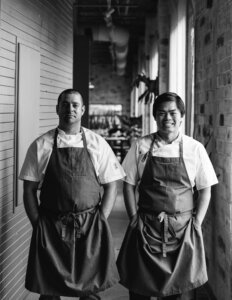
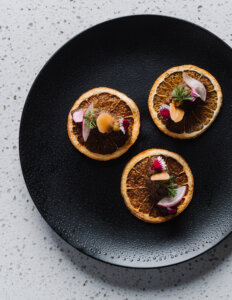
Southern hospitality ain’t done yet
The dizzying array of great chefs is worth the occasional trip north to check out every food story nestled in the guide. The achievement proves this region can stand up to the best culinary minds in the world. As Phillips puts it, “Atlanta has really stepped up its game.” Many ATL foodies have mused that Michelin’s arrival will inspire the food and beverage community to accelerate its development – for a given restaurant to make the guide next year, or to turn one star into two.
But this moment in time may be best captured by Hsu, whose upbringing means Atlanta food is in his blood. For him, Southern cooking is not a flavor, it’s a feeling, one that Maconites can relate to: “It’s a feeling that you can impart onto the guests while they dine and once they leave. And for me, that’s Southern hospitality. How do you make them feel? You make them feel like part of your family.”
See the Atlanta Michelin Guide or the full 45-restaurant lineup. Click through the links for reservations.
When you go, share a photo with the hashtag #MaconMagMichelin so we can find your photo for Faces.


